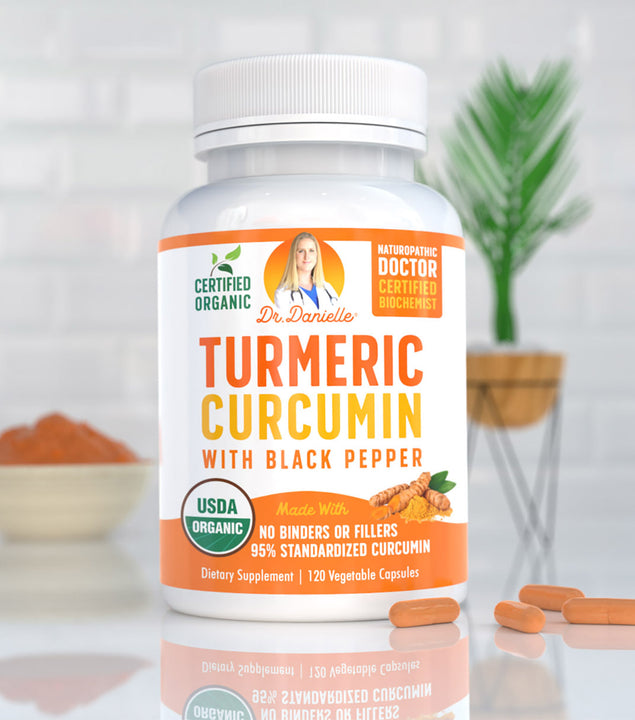Whether it is a birthday cake or your favorite strawberry yogurt, almost everything around you is loaded with color additives. The use of these food dyes has suddenly seen a surge in recent years. People have been adding them to sports drinks, candies, and baked goods to make them more appealing. According to a survey, the consumption of artificial dyes has increased by 500% over the past 50 years with children being the primary consumers. (1)
Several health experts have put forth claims that consuming these dyes and color additives as a part of food can lead to serious side effects, like cancer, allergies, and hyperactivity. But are these claims really true?
This article will review this highly controversial topic and discuss the safety of color additives in food.
Food Dyes – An Overview
From green beer seen on St. Patrick’s Day to colorful Easter eggs and the red and green Christmas cookies, food dyes are everywhere. These dyes and colorings can make any food fun to eat. But what are these dyes and how are they made?
Whether synthetic or natural, manufacturing food dyes involves a deeper understanding of chemistry. For example, consider the natural red food color that is commonly made from crushed cochineal insects. The red pigment is isolated from these insects followed by extraction and processing to convert it into a dye.
The world that surrounds us is rich and vibrant with a wide array of colors to offer. However, those that can work as food dyes are rather limited. Why? Because every food dye has to fulfill some technical aspects to be used in coloring food. For instance, they must be able to mix properly with other ingredients, not degrade when exposed to high temperatures, and not fade.
To broaden the variety of food dyes that fulfill this above-mentioned criterion, scientists resorted to synthetic color additives. For example, a green color additive available at your nearest supermarket may contain ingredients like propylene glycol, water, and propylparaben.
Thanks to the peculiar chemistry, artificial food dyes are likely to last longer than natural food colors. Additionally, the former has a lot of colors to add to foods, in contrast to the very limited number of colors that can be made through natural sources. Hence, the use of artificial dyes is gradually overcoming the use of natural ones to make any product attractive and eye-catching.
Types of Artificial Dyes Currently In Use
At present, there are six types of artificial dyes currently being used in the food industry after getting approval from the FDA and EFSA. (2)
Red No. 3 (Erythrosine)
This gives food a cherry-red hue which is commonly added to candies, popsicles, and in the decoration of cakes.
Red No. 40 (Allura Red)
This dye gives a dark red color used in many sports drinks, cereals, condiments, and candies.
Yellow No. 5 (Tartrazine)
This is a lemon-yellow dye that is often added to a variety of soft drinks, popcorn, candies, cereals, chips, and soft drinks.
Yellow No. 6 (Sunset Yellow)
This color additive gives an orange-yellow hue to baked goods, sauces, preserved fruit, and candies.
Blue No. 1 (Brilliant Blue)
Adding this dye to food gives it a greenish-blue tinge. It is commonly a part of packaged soups, ice cream, icings, popsicles, canned peas, etc.
Blue No. 2 (Indigo Carmine)
It is a royal blue dye added to ice cream, candy, snacks, and cereal.
There are some other varieties of dyes that have been approved for use in some countries but banned in others. For example, Green No. 3 has been approved by the FDA in the United States, but banned in Europe.
Side Effects of Food Additives
Natural color additives are normally considered safe to use as long as no chemicals are added to their composition. However, the use of artificial food dyes has been a cause of concern among many health experts due to the controversies related to their safety concerns. A massive group of people believes that they can cause side effects in the human body, some of which are explained below.
Allergies
Certain types of artificial food dyes have been known to trigger allergic reactions in consumers. The Yellow 5 dye in particular has led to the development of symptoms like asthma and hives that are characteristic of an underlying hypersensitivity reaction. (3)
Another study has found that around 52% of people with a history of problems like swelling and hives experience an allergic reaction due to the consumption of artificial food dyes. (4)
Fortunately, most of these allergic reactions are not likely life-threatening; but health-wise, it is a good decision to remove artificial dyes from your diet if you have problems with it.
Cancer
The link between artificial food dyes and cancer is highly controversial. Numerous animal studies have been performed to evaluate their safety of use over the years. Those studies using Red 40, Blue, and Yellow 5 and 6 dyes have found no proof of their connection with cancer. (5,6)
However, the use of some other varieties has still been deemed unsafe, especially the Red 3 and Blue 2 artificial color additives.
One particular animal study using the Blue 2 dye found that it can increase brain tumors. Even though the results were not enough to establish a definitive link, the suspicion remains. (7)
Erythrosine, also called Red 3, is the most controversial type of food color and has been found to increase the risk of acquiring tumors in the thyroid gland. (8) Due to this reason, erythrosine was partially banned by the FDA in 1990 but later on, the ban was removed after rendering the connection weak.
Hyperactivity
In 1973, a doctor with a specialization in pediatric allergy put forth an astonishing claim. As per this claim, the use of artificial food dyes in children leads to hyperactivity and problems in learning. Back in his time, there was not enough evidence to prove the claim; however, a lot of parents considered it true.
The same doctor later proposed following an elimination diet to treat this attention deficit hyperactivity disorder (ADHD). According to this diet, he started eliminating all artificial food colorings along with other synthetic ingredients.
Later on, a study found that excluding artificial food colors from the diet along with sodium benzoate, a type of preservation, can manage the symptoms of ADHD. (9) Another study found that 73% of the children with this problem recovered from their symptoms by eliminating artificial food dyes from their diet. (10) However, the participants in this study received a variety of ingredients so it was extremely difficult to determine which one of them exactly caused hyperactivity.
Despite the presence of several studies linking the use of artificial food colors with ADHD, both EFSA and the FDA have stated that the evidence to prove this connection is still insufficient.
Should You Avoid Food Dyes Altogether?

Among all the concerns related to the use of artificial food dyes, the most alarming is its link with cancer. However, the evidence supporting this connection is not sufficient. Based on the current research, it is highly unlikely that the use of artificial food dyes can cause cancer. They might trigger allergic reactions in some people, but if you do not develop any such symptoms, you may not need to eliminate them from your diet.
The connection between artificial food dyes and ADHD has by far the strongest connection. If your child exerts aggressive behavior or shows symptoms of hyperactivity, it may be beneficial to remove artificial food dyes from their diet.
The reason for adding artificial food colors to food is to make them look attractive. They do not contain any nutritional benefits at all. However, there is still no evidence that supports that you should absolutely avoid consuming artificial color additives.
That said, it is more important that whatever you choose to eat is healthy. Processed food is the biggest source of food dyes and is extremely unhealthy to eat on a routine basis. Removing them from your diet can not only reduce the intake of artificial food dyes but may also improve your health.
Eating A Healthy Diet Free Of Artificial Dyes
If you wish to eliminate the use of artificial food dyes, the best way is to promote healthy eating that comprises whole foods without any processing. Unlike processed foods, whole foods have high nutritive value.
Following are some good examples of food that are free from synthetic food dyes.
- Dairy and eggs: Plain yogurt, milk, eggs, and cheese.
- Meat and poultry: Fresh chicken, fish, pork, and beef without marinating.
- Nuts and seeds: Unflavored cashews, almonds, walnuts, pecans, and macadamia nuts.
- Fresh veggies and fruit: All varieties of fresh fruit and vegetables.
- Grains: Brown rice, oats, barley, quinoa.
- Legumes: Kidney beans, black beans, navy beans, chickpeas, and lentils.
In A Nutshell
The use of food colors has been booming in recent years. While the natural ones have been rendered safe for use, artificial color additives have always held a controversial position regarding their safety. Studies have attributed their use to the incidence of cancer, allergies, and hyperactivity. However, the evidence is weak and more research is needed to validate these connections. I personally avoid them whenever possible. If you still fear the use of these synthetic dyes, the best approach to eliminate them is to follow a healthy diet comprising unprocessed whole foods.








